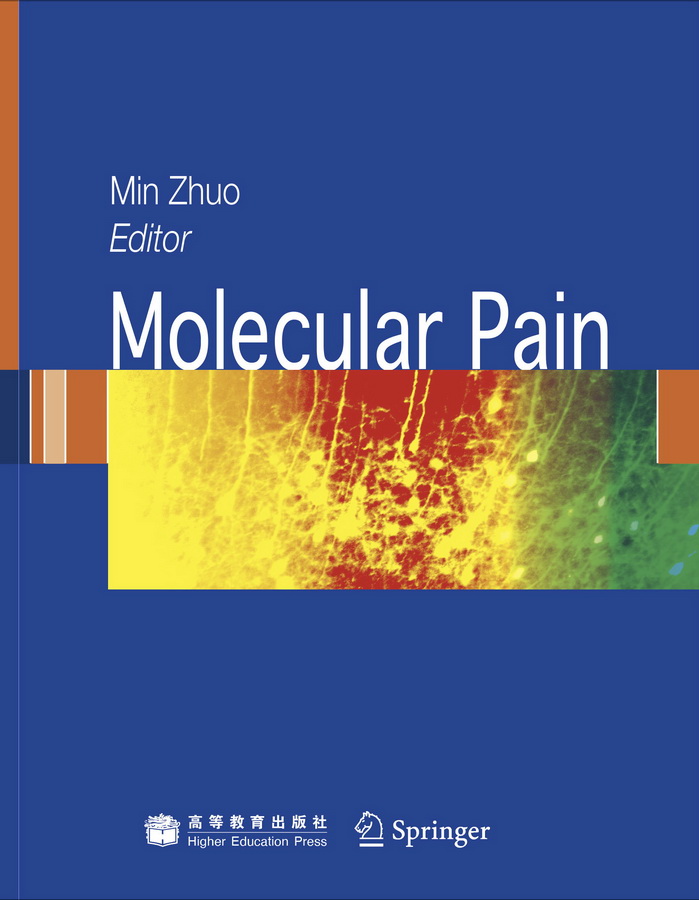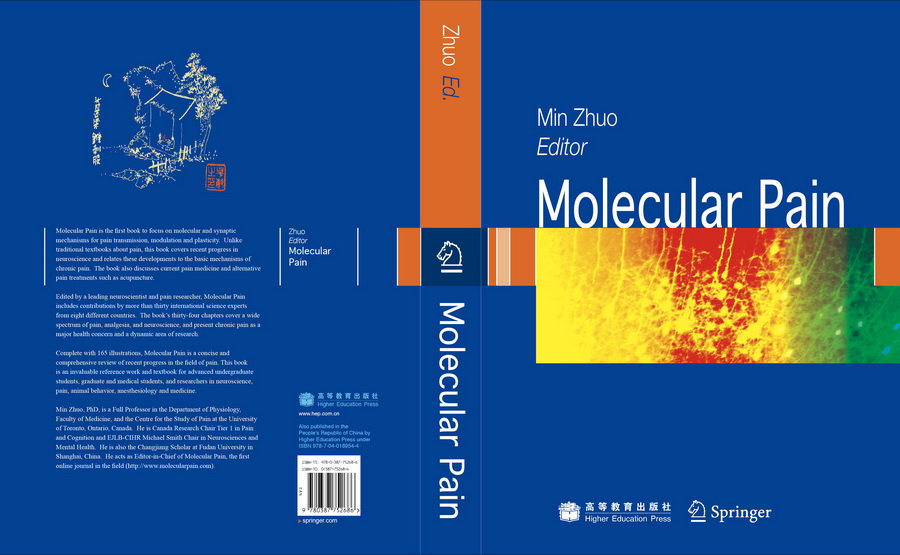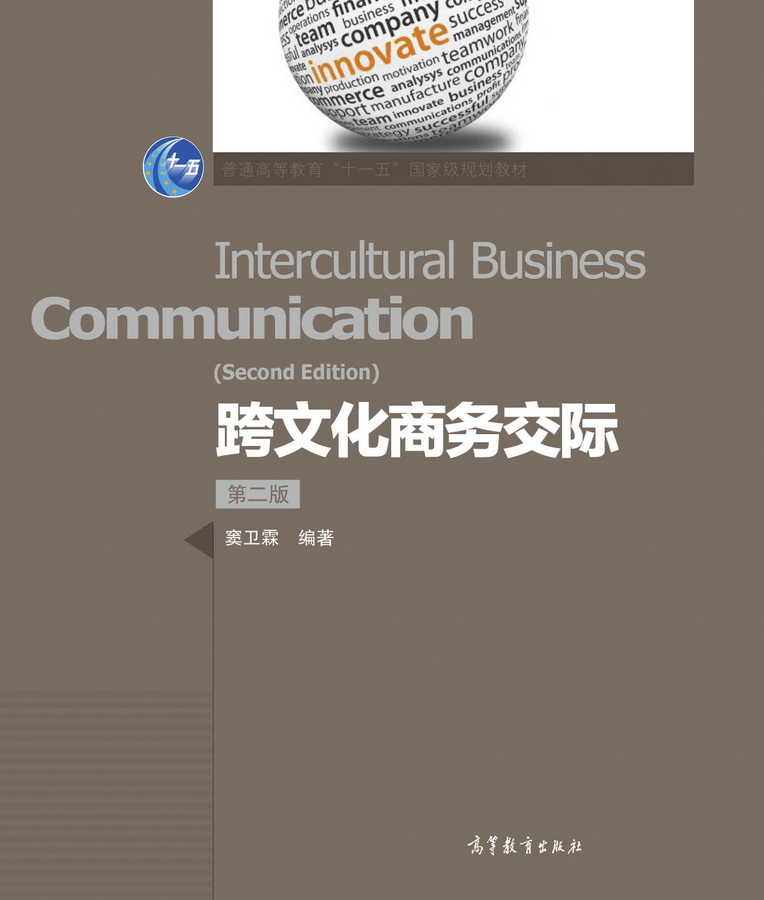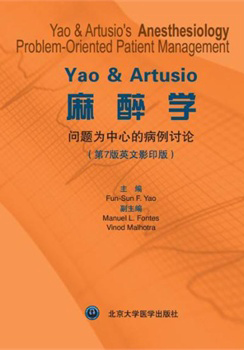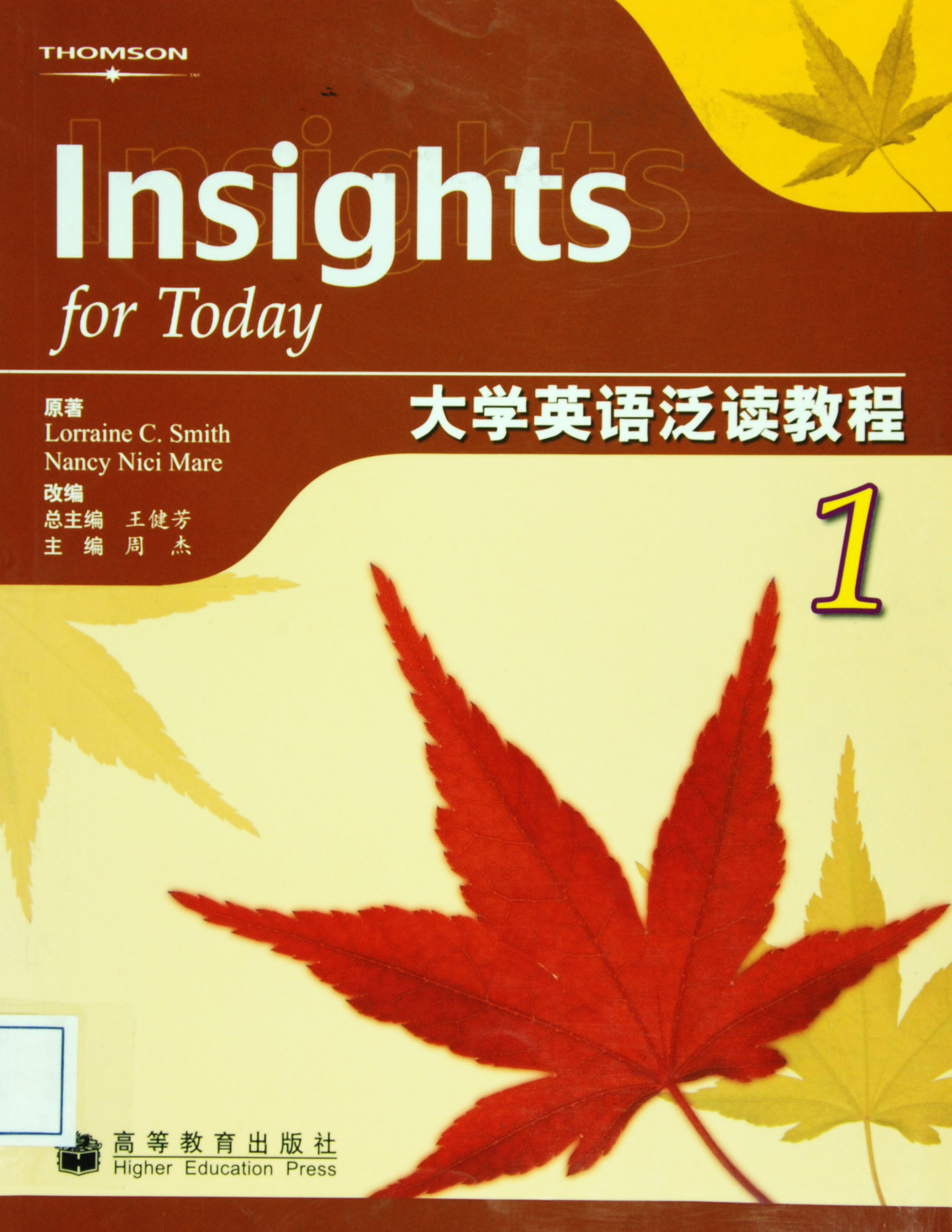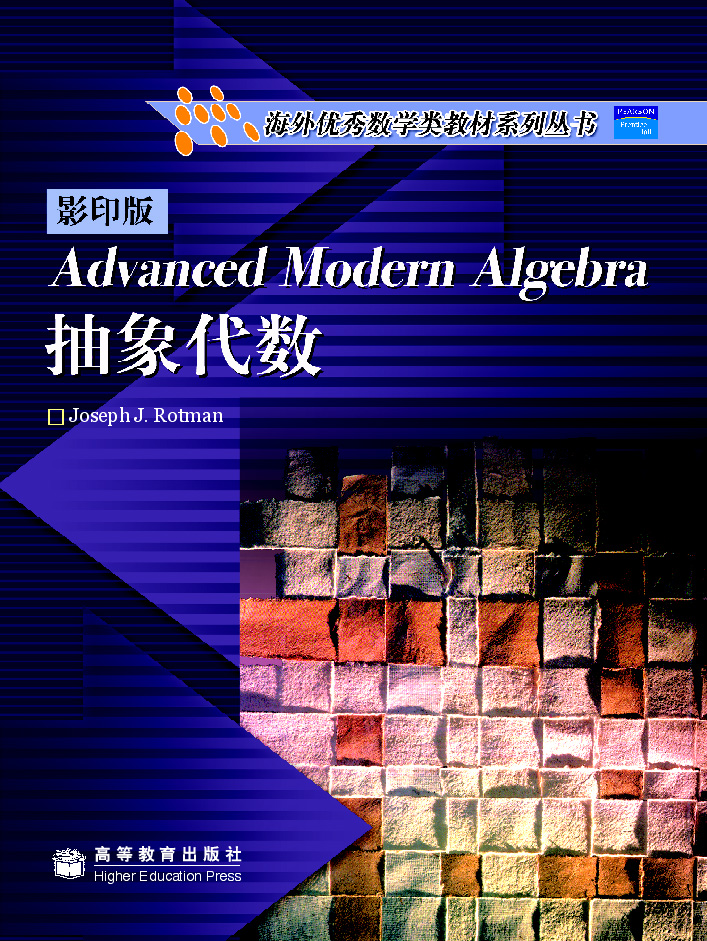疼痛的分子机理(英文版)
作者: Min Zhuo
出版时间:2007-10
出版社:高等教育出版社
- 高等教育出版社
- 9787040189544
- 1版
- 227417
- 48266840-7
- 精装
- 大大16开
- 2007-10
- 1000
- 508
- 理学
- 生物科学类
- R441.1
- 生命科学、医学类
- 研究生及以上
Unlike traditional textbooks, this book is edited as a series of topical seminars given by active researchers. The order of chapters is topic related, rather than the traditional layout of the pain textbooks, which is from periphery to the brain, and from basic to clinic. Most of topics are selected based on the recent progress as well as basic discovery at neurobiological levels in terms of our understanding. Many particular areas related to pain and analgesia are not covered, in part due to either the lack of molecular and cellular understanding of the process or the limit space.
Therefore, the readers are encouraged to use this book, together with the classic textbook of Pain (Wall and Melzeck). If necessary, the basic neuroscience textbooks are also recommended including the Prin-ciple of Neural Science (Kandel, Schwartz, Jessell).
Clinical studies are usually well covered in other pain-related textbooks. However, due to the limitation of new translational researches, we did not cover the clinical pain researches. Readers are encouraged to use the textbook of pain if needed.
Considering the rapid progress in neuroscience and pain related researches, the readers are highly recommended to use the PubMed in combination with this book.
The book is designed to teach basic principles for pain while introducing the most recent progress in exploring basic pain mechanism. We will aim at un-dergraduate students (late years), graduate students, post-doc fellows, medical students, nursing students, and clinical pain fellows. Although the book is focused on pain, we would like to also teach the students to use Pain as a model for investigating brain mechanisms.
Major Contributors
Preface
The Guide to Use This Book
Part Ⅰ Genes, Neurons and Neurotransmission
Chapter 1 Genes and Neurons(Bong-Kiun Kaang)
Chapter 2 Synapses: Coupling of Presynaptic Voltage-gated Ca2+ Channels to Vesicular Releaseof Neurotransmitter(Lu-Yang Wang)
Chapter 3 Synaptic Vesicle Cycle at Nerve Terminals (Ling-Gang Wu, Jianhua Xu)
Part Ⅱ Glutamate, Excitatory Transmission and Pain
Chapter 4 Postsynaptic Excitatory Transmission(John F. MacDonald, Suhas Kotecha, Michael F. Jackson, Michael Beazely)
Chapter 5 Kainate Receptors(Christophe Mulle)
Chapter 6 Excitatory Amino Acid Neurotransmitter Regulation (Rochelle Hines, Alaa El-Husseini)
Chapter 7 Spinal Glutamate Receptors(Megumu Yoshimura)
Chapter 8 Glutamate Kainate Receptor in Pain Transmission and Modulation (Min Zhuo)
Part Ⅲ Neuropeptides, ATP, Retrograde Messengers and Opioids
Chapter 9 Neuropeptides(Xu Zhang, Lan Bao)
Chapter 10 ATP and Its Receptors in Pain(Terumasa Nakatsuka, Jianguo G. Gu)
Chapter 11 Opioid Receptors(Zhizhong Z. Pan)
Chapter 12 Retrograde Messengers(Min Zhuo)
Part Ⅳ Inhibitory Transmission and Plasticity
Chapter 13 Inhibitory Transmission(Tian-Le Xu)
Chapter 14 Plasticity of Inhibition; GABA/glycine Systems(Yves De Koninck)
Part V Postsynaptic Signaling and Gene Regulation
Chapter 15 Protein Kinases and Phosphatases (Ronald A. Merrill, Stefan Strack)
Chapter 16 Activity-dependent Gene Regulation: How Do Synapses Talk to the Nucleus and Fine-tune Neuronal Outputs?(Haruhiko Bito, Sayaka Takemoto-Kimura, Hiroyuki Okuno)
Chapter 17 Second Messenger Pathways in Pain (Kathleen A. Sluka, David A. Skyba, Marie K. Hoeger Bement, Katherine M. Audette, Rajan Radhakrishnan)
Chapter 18 Genetic Approaches for the Study of Pain (Rohini Kuner)
Part Ⅵ Peripheral Nociceptor, Amygdala and Fear
Chapter 19 Peripheral Nociceptors (Makoto Tominaga)
Chapter 20 Amygdala—Pain Processing and Pain Modulation(Volker Neugebauer)
Chapter 21 Fear Learning (Paul W. Frankland, Sheena A. Josselyn)
Part Ⅶ Spinal Plasticity, Reorganization and Chronic Pain
Chapter 22 Silent Glutamatergic Synapses and Long-term Facilitation in Spinal Dorsal Horn Neurons(Min Zhuo)
Chapter 23 Anatomical Changes in the Spinal Dorsal Horn after Peripheral Nerve Injury (Andrew J. Todd, Alfredo Ribeiro-da-Silva)
Chapter 24 Spinal Microglia in Neuropathic Pain Plasticity(Michael W. Salter)
Part Ⅷ Cortical Plasticity, Reorganization and Amputation
Chapter 25 ACC Plasticity (Min Zhuo)
Chapter 26 Reorganization of the Sensorimotor System after Injury (Huixin Qi, Jon H. Kaas)
Part Ⅸ Endogenous Analgesia and Other Form of Analgesia
Chapter 27 Endogenous Biphasic Modulation (Min Zhuo, Gerald F. Gebhart)
Chapter 28 Paradoxical Analgesic and Hyperalgesic Effects of Stress (Meredith Turnbach Robbins, Timothy J. Ness)
Chapter 29 Acupuncture Analgesia(Zhi-Qi Zhao)
Chapter 30 Mechanisms of Opioid Tolerance (Zhizhong Z. Pan)
Part Ⅹ Models for Studying Pain and Searching for Pain Killers
Chapter 31 Models in Pain Research(Timothy J. Ness)
Chapter 32 Models for Studying Pain and Searching for Pain Killers in Vitro Electrophysiological Studies of Pain (Peter Goldstein, Jianguo Gu)
Chapter 33 Whole-cell Patch-clamp Recording in Vivo(Megumu Yoshimura)
Chapter 34 Basic Mechanisms of Clinically Used Drugs(Annika B. Malmberg)
Selected References
Appendix Ⅰ Units in Pain Research
Appendix Ⅱ Useful Websites for the Study of Pain
Appendix Ⅲ List of Scientific Journals Publishing Studies in Pain
Appendix Ⅳ Fundamental and Innovative Contribution to Understanding of Basic Mechanism of Pain, Analgesia and Persistent Pain

